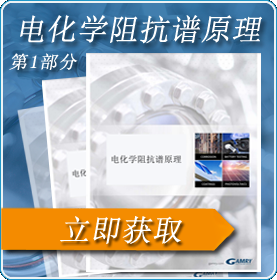THE Method for Crevice Corrosion Repassivation Potentials
Introduction
Localized corrosion, including crevice corrosion, is a leading cause of corrosion-induced failures. THE Method (Tsujikawa-Hisamatsu-Electrochemical Method) has been proposed to measure crevice corrosion repassivation potentials.
This protocol for studying the repassivation potential of a corroding crevice was first suggested by Tsujikawa and Hisamatsu in 1980 (Ref 1,2). Recent interest in very long service-life alloys (Ref 3,4) has rekindled interest. We became involved when a Gamry user asked us to prepare a special script to automate the testing.
Gamry’s Solution
Because of Gamry’s Open Source Scripting approach to software development, the experiments were fairly easily done in the Gamry FrameworkTM ExplainTM scripting language. Gamry’s Echem Analyst™ scripts, written in Microsoft’s Visual Basic for Applications, were also easily modified.
Like the Critical Pitting Potential experiment (ASTM F746), THE Method involves a stimulation phase and a repassivation phase. The stimulation phase is a potentiodynamic ramp towards more anodic potentials. The ramp stops when the current reaches a critical threshold (20 µA/cm2), indicating that crevice corrosion has been initiated. The sample is then galvanostatically held at this current density for a fixed time (2 hours). At the end of this galvanostatic hold, the potential is measured. The cell is returned to potentiostatic control at this potential. The potential is then stepped towards the original open circuit potential in 10 mV increments.
During these potentiostatic steps the current is monitored. If the current continues to increase, that is the indication that crevice corrosion is continuing. If the current does not increase when the potential is held for two hours, then the repassivation potential has been reached.

The adjacent plot shows the potential (green) and current (blue) recorded during a typical run. In this plot, the potentiodynamic scan lasted for about 1 hour and terminated when the current density reached 20 µA/cm2. During the galvanostatic hold (hours 1 to 3) at this current density the potential decays. At the end of the hold, the potential is stepped towards a more cathodic potential. We see that the current continues to increase during these steps. This is a clear indication that the crevice corrosion is still accelerating. Finally, when the potential is stepped to about 0.13V, the current no longer increases, indicating that the repassivation potential has been reached.
The THE Tecchnique is described in ASTM Standard G 192. The THE technique is included with the Gamry DC105 DC Corrosion Technique Software.
References
1. S. Tsujikawa and Y. Hisamatsu, Corr. Eng. (Jpn), 29, 37 (1980)
2. M. Akashi, G. Nakayama and T. Fukuda, Corrosion/1998, Paper 158, NACE International (Houston, TX, 1998).
3. V. Jain, D. Dunn, N. Sridhar and Lietai Yang, Corrosion/2003, Paper 03690, NACE International (Houston, TX 2003).
4. K. J. Evans, L. L. Wong and R. B. Rebak, “Determination of the Crevice Repassivation Potential of Alloy 22 by a Potentiodynamic-Galvanostatic-Potentiostatic Method,” Pressure Vessels and Piping Conference, American Society of Mechanical Engineers (San Diego, CA, July 2004).
Want a PDF version of this application note?
Please complete the following form and we'll mail a link to your inbox!



